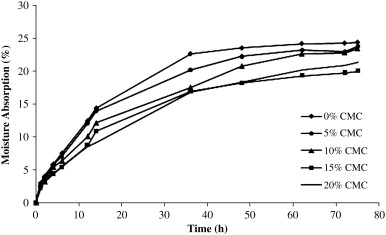carboxymethyl cellulose properties
Name: Sodium CarboxymethylCellulose (CMC for short)
Characteristics
1 Appearance
White or lightly yellow powder with no odor, no flavor and no poison
2 Solubility
As easily hygroscopic substance, carboxylmethylcellulose can be well dissolved in either cold or hot water with gummy solution formed. It is not soluble in organic solvent like methanol, ethanol, acetone, chloroform, benzol etc.
The common viscosity of carboxylmethyl cellulose solution (dissolved in 1% water) is 25mPa.s-8000mPa.s.
When degree of substitute (D.S for short) is around 0.3 the solution is alkaline. And with the D.S increasing the transparence also increases.
Same as other high-molecular dielectric, when carboxylmethyl cellulose is dissolved it will expand first then dissolve slightly. So only by mixed fully and make each particles wet quickly can the dissolution be done swiftly. Otherwise the expansion will make the particles gather to form group or films, which will make them difficult to disperse therefore caused the tough solubility.
3 Hygroscopicity
Water content of carboxylmethyl cellulose will reach a balance condition and the balanced content will increase with the increase of air humidity but will go counter to the increase of the temperature.For example, with room temperature and air humidity of averagely 80%-85% the balanced water content is over 26%, but when packaged the real content is lower than 10% which is under the balanced content. That’s why carboxylmethyl cellulose is hygroscopic. Actually even the water content goes to 15% the appearance will almost remain the same.But when goes to over 20% the carboxylmethyl cellulose powder will become sticky obviously.
4 Viscosity of the solution
4.1 The viscosity of the carboxylmethyl cellulose solution actually reflects the degree of the substitute and the uniformity of the D.S.
4.2 Facts that affect the viscosity
A Concentration of the solution: whether for low-viscosity carboxylmethyl cellulose, medium-viscosity carboxylmethyl cellulose and high-viscosity carboxylmethyl cellulose, the solution viscosity all linearly go up with the increase of the concentration;
B Ph: viscosity of 1% carboxylmethyl cellulose solution is stable and max among PH 6.5~9.0 and differ little between PH 9.0-11.0.But viscosity decreases quickly when pH is lower than 6 and will form carboxylmethyl cellulose acid which will stabilize at PH 2.5; viscosity will also decrease slightly when PH is over 9 and will decrease quickly when PH is over 11.5.This is caused by the combination of un-substituted hydroxyl group with alkali molecular.
C Temperature. When temperature increases the viscosity will go down accordingly. So when is cooled the viscosity of carboxylmethyl cellulose solution will increase. But the viscosity will decrease irreversibly and permanently when the temperature goes up to a certain point. It should be noticed that the degree speed of the viscosity is related to the D.S of the carboxylmethyl cellulose. The higher the D.S is, the less the temperature will affect the viscosity.
D existence of the salt; when inorganic salt exist the viscosity of carboxylmethyl cellulose solution will be decreased and the decrease is mostly determined by the chemical valence of the cationic. Usually carboxylmethyl cellulose is soluble when exposed to monovalent cation, insoluble when exposed to trivalent cation and be between with solubility and insolubility when exposed to divalent cation.
5 When meet with heavy metal salts like PbSO4、FeCl3、FeSO4、CuSO4、K2Cr2O7、AgNO3、SnCl2, carboxylmethyl cellulose will also react with them to form sediment and become insolubility.
Product:
Also you may be interested in: Sodium carboxymethyl cellulose properties

